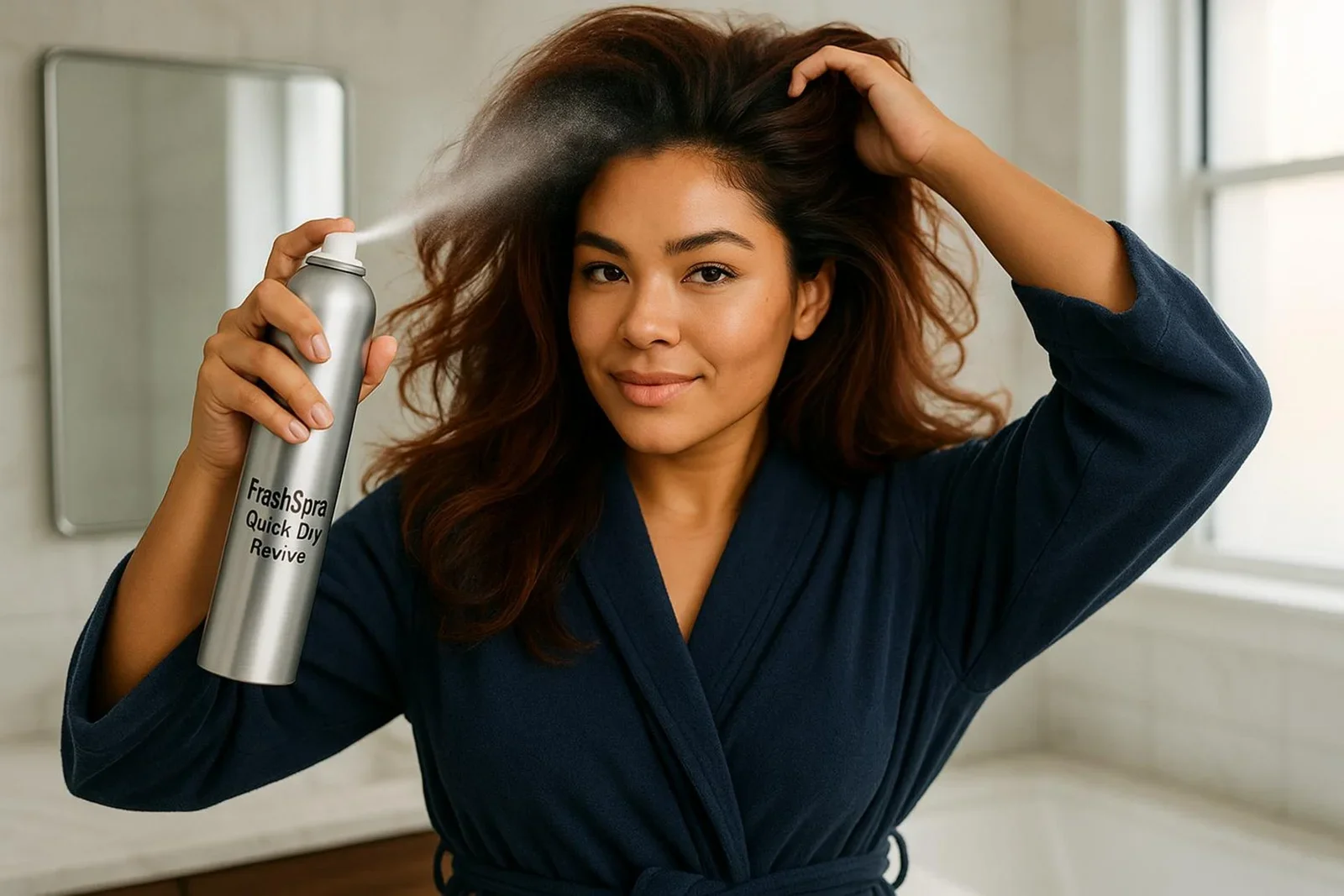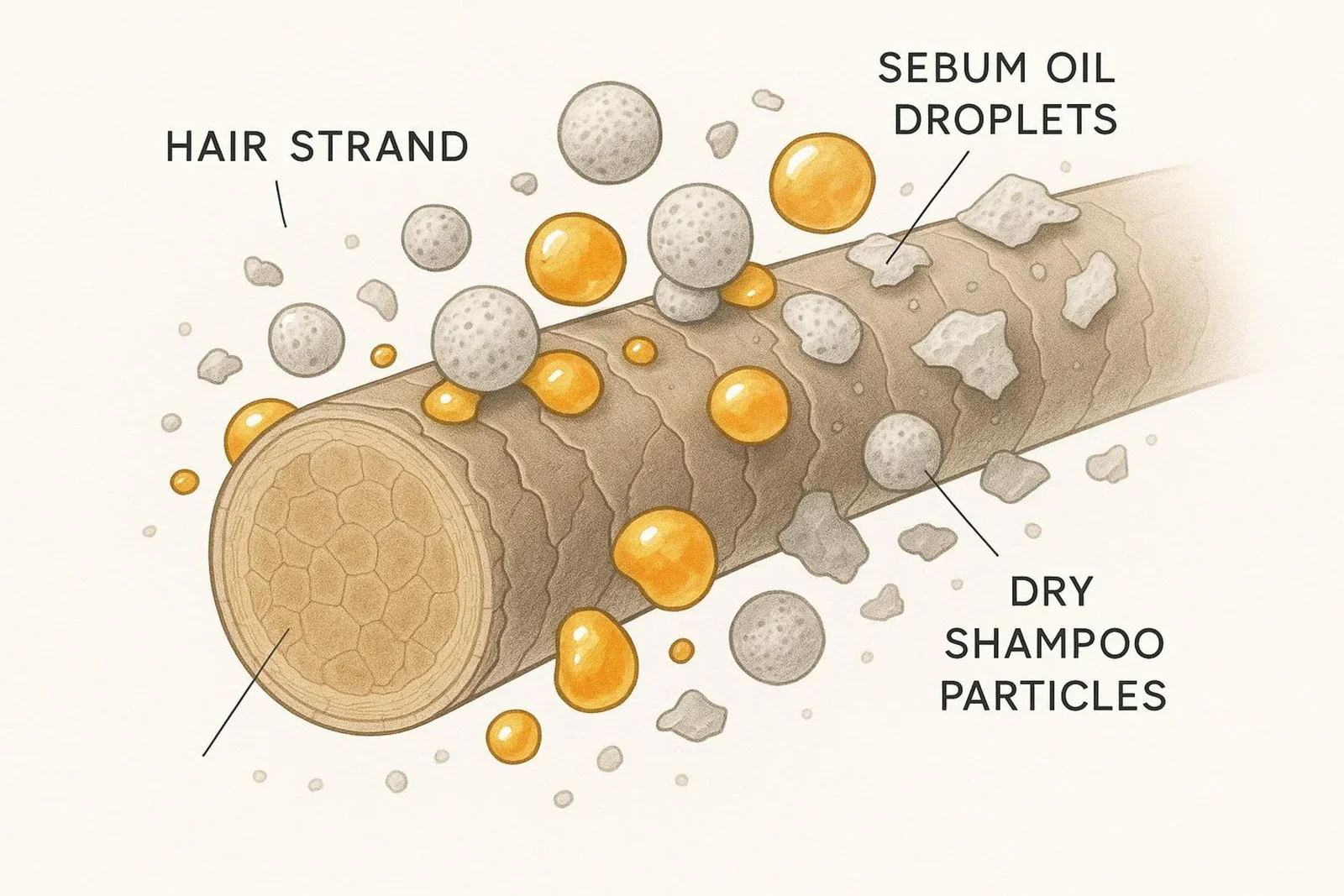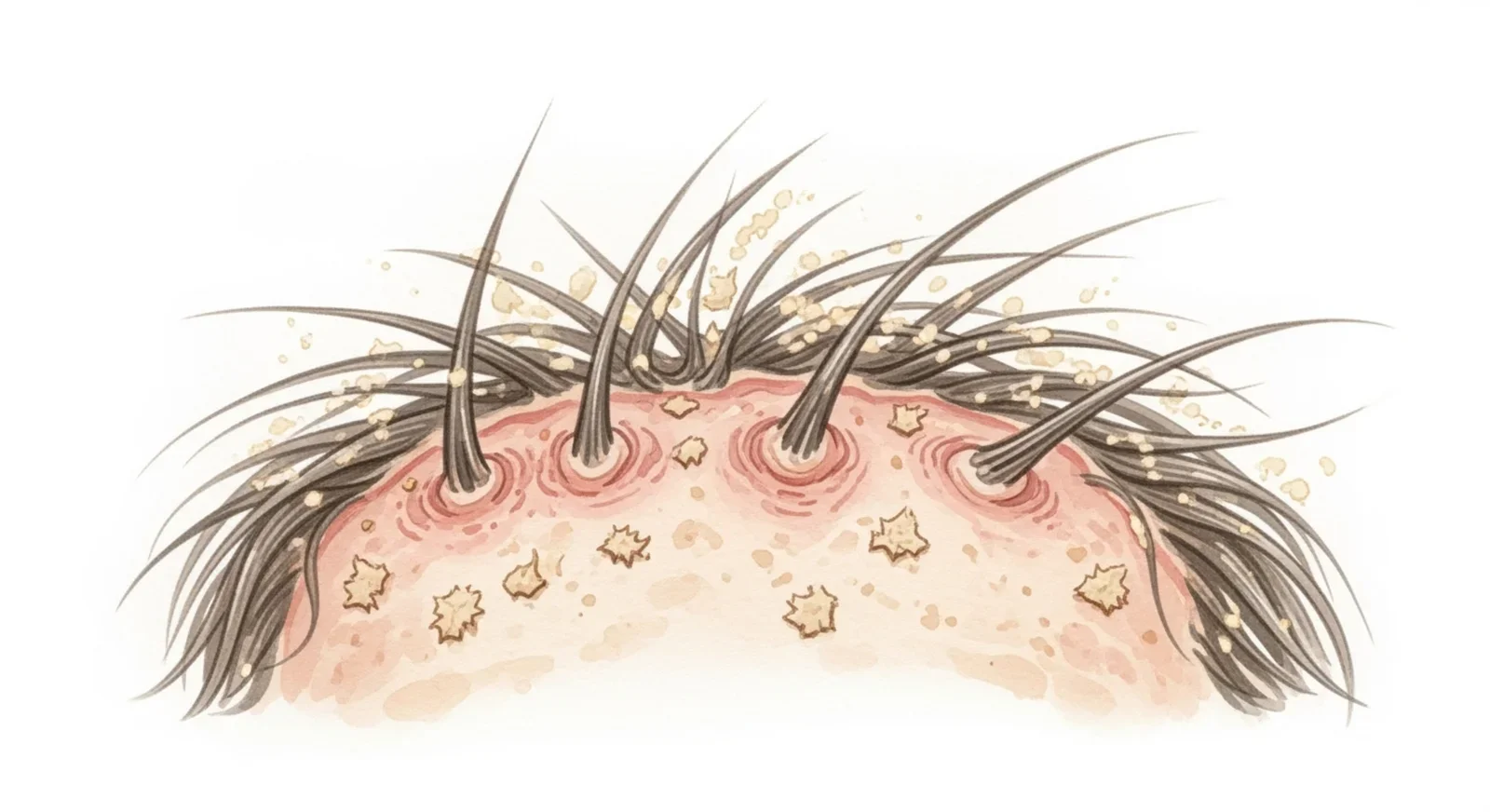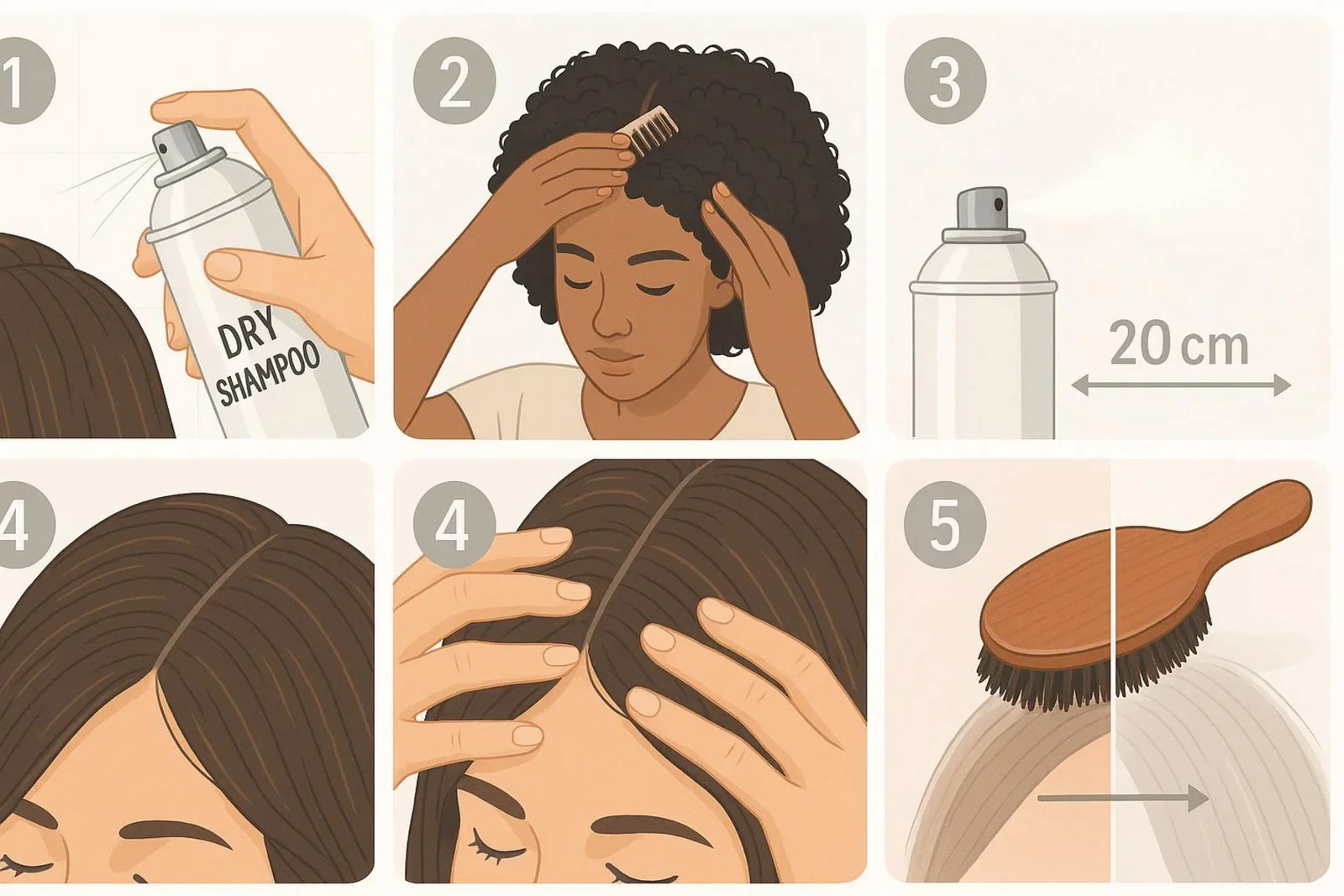Dry Shampoo: Benefits, Drawbacks, and How to Use It Properly
Dry shampoo has become a must-have in many people's hair care routines, giving a fast solution for days when you can't wash your hair. But what is dry shampoo, and how does it make dirty hair look fresh without water? Dry shampoo is a product that absorbs extra oil, grease, and sweat from your hair, making it look cleaner. You spray or sprinkle it onto dry hair, and there's no need to rinse it out, so it’s perfect for freshening up when you’re in a hurry. Remember, dry shampoo doesn’t actually clean your scalp; it just makes hair look and smell nicer by soaking up surface oil and adding some fragrance.
What Is Dry Shampoo and How Does It Work?
Dry shampoo is a hair product you use without water to absorb oil and refresh your hair between regular washes. You’ll usually find it in a spray can or as a powder, but there are also mousse and paste forms. The main job of dry shampoo is to make your hair look less oily and give it a clean appearance, especially at the roots where oil shows up the most. It's a big help on busy mornings or when you want to keep your hairstyle looking good for longer.
Main Ingredients and How They Absorb Oil
Dry shampoo works because of ingredients like alcohol and starch (normally rice or corn starch) that soak up oil and sweat. These are sprayed or sprinkled onto the oily areas of your head and quickly absorb grease, making your hair look fresher. Many dry shampoos also add a nice scent. Keep in mind, though, this only takes care of visible oil on your hair, not dirt or debris on your scalp. The oil glands in your scalp keep making oil, but dry shampoo only removes what’s on the hair surface.
| Common Ingredients | Purpose |
|---|---|
| Rice starch, corn starch | Absorb oil and sweat |
| Alcohol | Helps the product dry quickly |
| Talc or similar powders | Absorbs oil (sometimes used instead of starches) |
| Fragrance | Adds a fresh scent |
When Should You Use Dry Shampoo?
Dry shampoo can save you time, but it's meant for in-between regular washes, not permanent replacement.
Best Times to Use Dry Shampoo
When you wake up late and don’t have time to wash your hair
After a workout to absorb sweat and oil
To keep your salon blowout or hairstyle looking good for another day
When you’re traveling or when access to showers is limited
Dry shampoo can also add volume and texture to clean hair, which helps when styling updos or braids. Some people use it at night so that it absorbs oil while they sleep, leaving hair fresher in the morning.
Who Benefits Most from Dry Shampoo?
People with oily hair needing a quick refresh
Anyone recovering from surgery or with limited ability to shower
People with fine or limp hair looking for extra lift
Those with textured or curly hair seeking volume without more washing
Benefits of Using Dry Shampoo
Refreshes Hair: Makes your hair look and smell cleaner between washes by absorbing oil.
Adds Volume: Helps boost flat hair, giving it more body and grip for styling.
Preserves Styles: Keeps your blowout or hairstyle looking nice for longer, so you wash and heat-style less often.
Drawbacks and Risks of Dry Shampoo
Possible Scalp Issues or Buildup
Dry shampoo doesn’t wash your scalp, so using it too often can lead to buildup of product, oil, and dead skin. This can make your scalp itchy, dry, or even lead to pimples, rashes, or conditions like seborrheic dermatitis.
Effects on Hair Health with Heavy Use
Using dry shampoo all the time can dry out your hair, causing it to feel coarse, brittle, and making it break more easily. Your scalp needs regular washing to stay healthy.
Replacement for Regular Washing?
Dry shampoo does not clean your hair the way regular shampoo and water do. Overusing it instead of washing can cause scalp irritation and poor hair health. Use it only between actual washes.
Is Dry Shampoo Good for All Hair Types?
Fine, Oily, Curly, and Natural Hair
Fine Hair: Gains volume and loses greasiness with dry shampoo.
Oily Hair: Can go longer between washes, but regular shampooing is still needed for a healthy scalp.
Curly/Textured Hair: Works best if applied only at the roots, then patted in with fingers. Don’t brush out when dry-this can cause frizz.
Coloured or Chemically Treated Hair
Dry shampoo helps keep coloured hair looking bright by allowing fewer washes (which means less color fade). If you have dark hair, look for tinted dry shampoos to avoid a white or chalky residue.
How to Use Dry Shampoo Properly
Start with Dry Hair: Hair should be totally dry before applying.
Shake the Can: Always shake a spray can before you spray.
Part Your Hair in Sections: Focus on oily spots, like the roots and crown.
Spray or Sprinkle on Roots: Hold the spray can about 15-30 centimeters from your scalp. For powders, sprinkle lightly.
Let It Sit: Wait 30-60 seconds so oils get absorbed.
Massage In: Rub the product in with your fingers so it blends in.
Brush or Comb Out: This spreads the product evenly and removes extra powder.
Style as Usual:: Finish styling as you like. A cool-blow dryer shot can add bounce.
What to Avoid
Don’t spray too close to your scalp-this can cause powdery patches
Don’t use too much-start light and build up if needed
Let it sit-massaging too soon means it absorbs less oil
Never apply to wet hair-it’s for dry hair only
Always massage and brush so there’s no visible residue
Don’t spray only the top layer-section your hair for even coverage
Choose tinted versions if you have dark hair to avoid a white cast
Tips for Better Results
Apply before your hair looks greasy, like at night
Focus on the roots, not the ends
Use for extra volume, even on clean hair
Check ingredients for gentle, natural choices if you have a sensitive scalp
How Often Should You Use Dry Shampoo?
Dry shampoo is helpful now and then, but don’t use it every day. Most experts say to use it for no more than two days in a row. After that, you need to wash your hair properly.
Oily Hair: 2-3 times a week between washes is usually enough
Normal Hair: Once or twice a week is fine
Dry/Textured Hair: Use sparingly and only on roots, especially if you don’t get oily often
Signs You’re Using Too Much Dry Shampoo
Itchy, dry, or flaky scalp
Dull-looking or powdery hair
Coarse, brittle feeling hair
Scalp breakouts or rashes
More dandruff than usual
In rare cases, more hair shedding
If you see these signs, wash your hair with water and regular shampoo to reset your scalp and hair.
What to Look For When Choosing a Dry Shampoo
Ingredients
Absorbents: Look for starches (rice, corn, tapioca). Powders are usually more gentle than alcohol-heavy sprays.
Alcohol: Too much alcohol dries hair. Choose lower alcohol or alcohol-free types if you have dry hair or scalp.
Fragrance: If you’re sensitive, pick unscented or mild-scented options.
Conditioners: Ingredients like Vitamin E or panthenol help keep hair softer.
Type: Choose between sprays, powders, mousse, or paste based on personal preference and hair needs.
Matching to Hair Colour
Tinted Dry Shampoos: Best for dark hair-no white residue
Invisible Formulas: Great for all hair colours-won’t leave visible powder
For Blondes or Light Hair: White powder is usually not a problem, but too much may make hair look dull
Frequently Asked Questions About Dry Shampoo
Can I Use Dry Shampoo Every Day?
No. Using it daily without shampooing can cause scalp irritation and buildup. Most people should use it only once or twice between regular washes.
Can Dry Shampoo Cause Dandruff or Hair Loss?
Dry shampoo doesn’t directly cause dandruff or hair loss, but using too much and washing your hair too little can lead to scalp problems that could increase dandruff or even shed hair if your scalp gets irritated.
How Is Dry Shampoo Different from Other Styling Products?
Main Focus: Dry shampoo absorbs oil, unlike hairsprays or mousses, which are mainly for hold or volume
How It Works: It uses powders to absorb oil, not to stick or hydrate
Where It’s Used: Mostly on the roots, while many styling products go on the whole hair
No Water Needed: Dry shampoo is for use on dry hair between washes
Final Thoughts: Is Dry Shampoo Right for You?
Dry shampoo is a handy helper in today’s busy life. It makes your hair look and feel fresher in between regular washes, gives volume, and saves time. It is perfect for extending styles or refreshing after the gym. But remember, it does not actually clean your hair-it’s just for in-between. Too much can cause hair and scalp issues, so always use it in moderation. There’s a wide range of dry shampoos-choose one that matches your hair type and colour. Use it mainly on your roots, don’t pile on too much, and wash regularly with water and shampoo to keep your scalp and hair healthy. If you want an easy way to freshen up your hair, dry shampoo is worth trying-but rely on it as a helper, not a replacement for washing.
Do you live in Sydney?
Get the perfect look at our salon – schedule your appointment now!
Our Services
Check Out Our Instagram
Check out our instagram
Check out our instagram and see our latest posts!
Check out our facebook
Check out our facebook and see our latest
posts!












